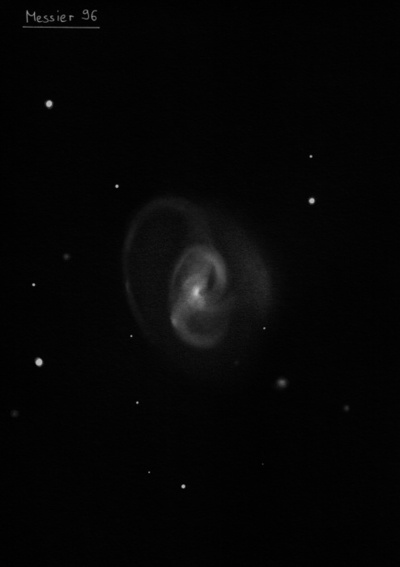
Pierre Méchain discovered M96 = NGC 3368 = h749 on 20 Mar 1781. Four nights later it was confirmed by Messier. William Herschel observed M96 on 11 Mar 1784 (sweep 164) and recorded "A fine, bright nebula, much like the former [M95], but the brightest part in the middle is more joined to the nebulosity than in the former, and the bright part is rather longer, though not quite so vivid as in the former. It may still be called cometic, though it begins to depart a little from that kind."
Johnstone Stoney, LdR's assistant, noted "Is, I think, certainly a spiral." (3 Mar 1850). A year later, Bindon Stoney added "vBM, perhaps shaped like an S reversed." A sketch clearly shows a spiral arm curving counterclockwise on the east side towards the south. It also shows a darker strip just west of the central region between the western arm. M96 was included in the list of "Spiral or curvilinear" nebulae in LdR's 1850 PT paper.
200/250mm - 8" (3/28/81): bright, fairly large, slightly elongated.
300/350mm - 13.1" (2/25/84): very bright, small bright nucleus.
400/500mm - 17.5" (2/28/87): very bright, fairly large, elongated NW-SE, 5'x3.5', small bright core, stellar nucleus. Brightest in the Leo group (M96 Group) with M95 40' WSW and M105/NGC 3384 ~50' NNE.
Notes by Steve Gottlieb